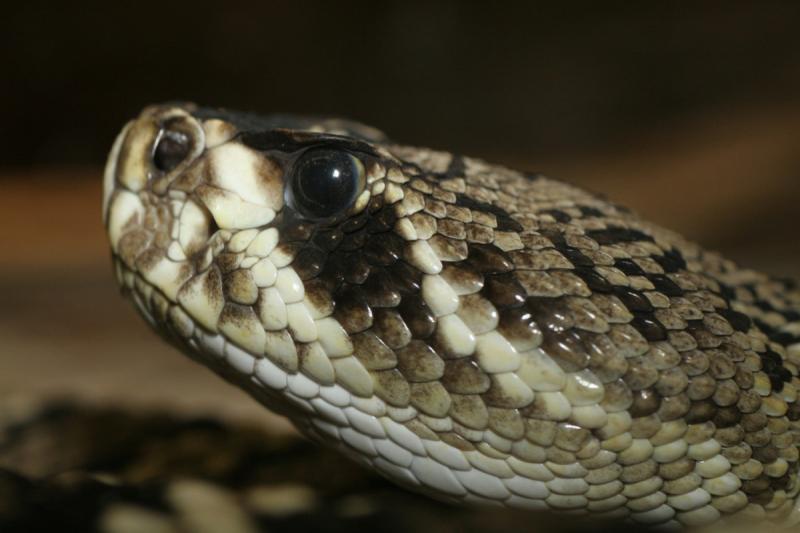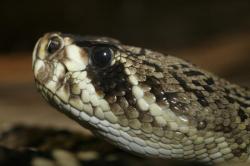What are the poisonous snakes in the United States?
In the United States, there are several species of venomous snakes. It's important to note that the term "poisonous" is not accurate when referring to snakes. Snakes are venomous, meaning they inject venom through fangs to subdue prey or defend themselves. Poison refers to substances that are harmful when touched or ingested.
Here are some of the venomous snakes found in the United States:
Rattlesnakes (Crotalus spp.):
- Rattlesnakes are a group of venomous snakes known for the rattle on their tails. There are several species found in different regions of the U.S. Some common species include the Eastern Diamondback Rattlesnake, Western Diamondback Rattlesnake, and Timber Rattlesnake.
Copperheads (Agkistrodon contortrix):
- Copperheads are venomous pit vipers with distinctive copper-colored heads. They are found in various regions, including the eastern and central parts of the United States.
Cottonmouths or Water Moccasins (Agkistrodon piscivorus):
- Cottonmouths are semi-aquatic venomous snakes found in southeastern parts of the United States. They are known for their habitat preference for wetlands and waterways.
Coral Snakes (Micrurus spp.):
- Coral snakes are highly venomous but relatively shy and seldom encountered. The Eastern Coral Snake is the only species found in the United States, primarily in the southeastern states.
It's essential to exercise caution and be aware of your surroundings, especially when spending time in areas where snakes may be present. Here are some general safety tips:
Learn to Identify Venomous Snakes:
- Familiarize yourself with the appearance of venomous snakes native to your region. Note their color patterns, head shapes, and distinctive features.
Give Snakes Space:
- If you encounter a snake, give it a wide berth and do not attempt to handle it. Most snake bites occur when people attempt to interact with or kill the snake.
Watch Where You Step:
- When hiking or walking in areas where snakes may be present, watch where you step, especially in tall grass, rocky areas, or near water sources.
Use Caution in Snake Habitat:
- Exercise extra caution in snake-prone habitats such as wooded areas, grasslands, and near water bodies.
Wear Appropriate Footwear:
- Wear sturdy and closed-toe shoes, especially in areas where snakes are known to inhabit.
Be Mindful in Warm Weather:
- Snakes are more active in warmer months, so be particularly vigilant during spring and summer.
If bitten by a snake, seek immediate medical attention. Do not attempt to suck out the venom or use a tourniquet, as these methods are not recommended and may worsen the situation.
Always consult with local authorities or wildlife experts to learn more about the specific snakes in your area and the best practices for coexisting safely.
Venomous species awareness: What are the poisonous snakes in the United States?
The United States is home to a variety of venomous snake species, with an estimated 20 species found across the country. These snakes include rattlesnakes, copperheads, cottonmouths (water moccasins), and coral snakes. While all venomous snakes in the United States are capable of producing venom that can cause serious harm to humans, not all bites are fatal.
Here's an overview of the four main types of venomous snakes in the United States:
Rattlesnakes: Easily recognizable by their rattle, rattlesnakes are the most common venomous snakes in the United States. They are found in a variety of habitats, including rocky areas, grasslands, and forests.
Copperheads: Copperheads are found in wooded areas, swamps, and along rocky streams. They are typically brown or tan in color and have a distinctive hourglass-shaped marking on their backs.
Cottonmouths (Water Moccasins): Cottonmouths are found in and around water, such as swamps, lakes, and rivers. They are typically black or olive green in color and have a wide, thick head.
Coral Snakes: Coral snakes are found in a variety of habitats, including forests, grasslands, and deserts. They are typically brightly colored with patterns of red, yellow, and black.
Overview of venomous snake species in the United States and safety measures for encounters
While venomous snakes play an important role in the ecosystem by controlling rodent populations, it is crucial to be aware of their presence and take precautions to avoid encounters. Here are some safety measures to follow in areas inhabited by poisonous snakes:
Wear protective clothing: When hiking or exploring areas where venomous snakes are common, wear long pants, sturdy boots, and gloves to protect your skin from potential bites.
Be aware of your surroundings: Pay attention to the ground and watch for signs of snakes, such as shed skin or tracks. Be cautious when moving through tall grass, brush, or rocky areas.
Use a flashlight at night: If you are hiking or camping in areas with venomous snakes, use a flashlight to illuminate your path and avoid stepping on snakes during the night when they are most active.
Avoid handling snakes: Never attempt to handle or pick up a snake, even if it appears to be dead. Snakes can have a reflex bite, even after they are deceased.
Teach children to be cautious: Educate children about venomous snakes and teach them to avoid contact with them.
Tips for snake bite prevention and first aid in areas inhabited by poisonous snakes
If you encounter a venomous snake, the best course of action is to remain calm and move away slowly. Do not attempt to provoke or frighten the snake. If you are bitten, follow these first aid steps:
Stay calm and do not panic: Panicking will only increase your heart rate and spread venom throughout your body more quickly.
Immobilize the bitten area: Avoid moving or using the bitten area as much as possible to minimize the spread of venom.
Remove any constricting jewelry or clothing: Loosen or remove any jewelry or tight clothing from around the bitten area to prevent swelling.
Do not waste time with home remedies or folklore: Do not attempt to suck the venom out, apply ice, or cut the wound. These practices are ineffective and may even worsen the situation.
Seek medical attention immediately: Call 911 or seek medical attention immediately. The sooner you receive medical treatment, the better your chances of a full recovery.
Remember, prevention is always better than cure. By following these safety measures and knowing what to do in the event of a snake bite, you can minimize your risk of harm and enjoy outdoor activities in areas inhabited by poisonous snakes.







